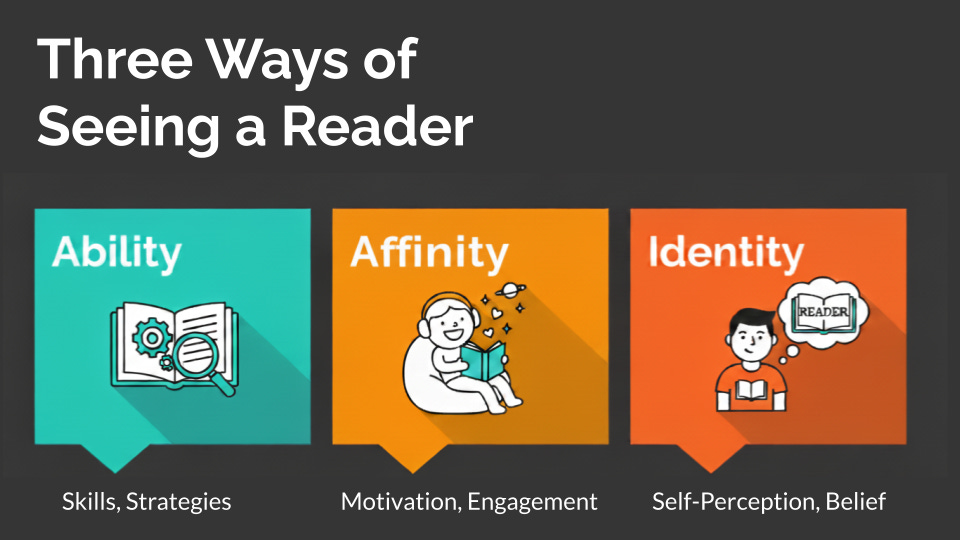Reader Identity—From Engagement to Empowerment
Part 2 of 3, Lens 3: Identity
This is the fourth installment in this series on teaching the whole reader. It’s exclusively for paid subscribers—thank you for your support! You can read the introductory post here, the first lens (ability) here, and the second lens (affinity) here. Next week will close out this series.
Traditional reading assessment focuses largely on skills and strategies, such as how many words they can read correctly per minute and their responses to comprehension questions. A determination is then made: this student is or is not proficient. But what is the root cause as to why a student is successful as a reader or not? Teachers need additional data to make these determinations.
“So what I am hearing,” Paul summarizes, once Jayne explained her situation, “is that you would like to see your students grow as readers, beyond skills and strategies. You have observed gains in their oral reading fluency, but they aren’t engaged enough in what they are reading. Does that sound about right?”
Jayne nodded…
Keep reading with a 7-day free trial
Subscribe to Read by Example to keep reading this post and get 7 days of free access to the full post archives.

